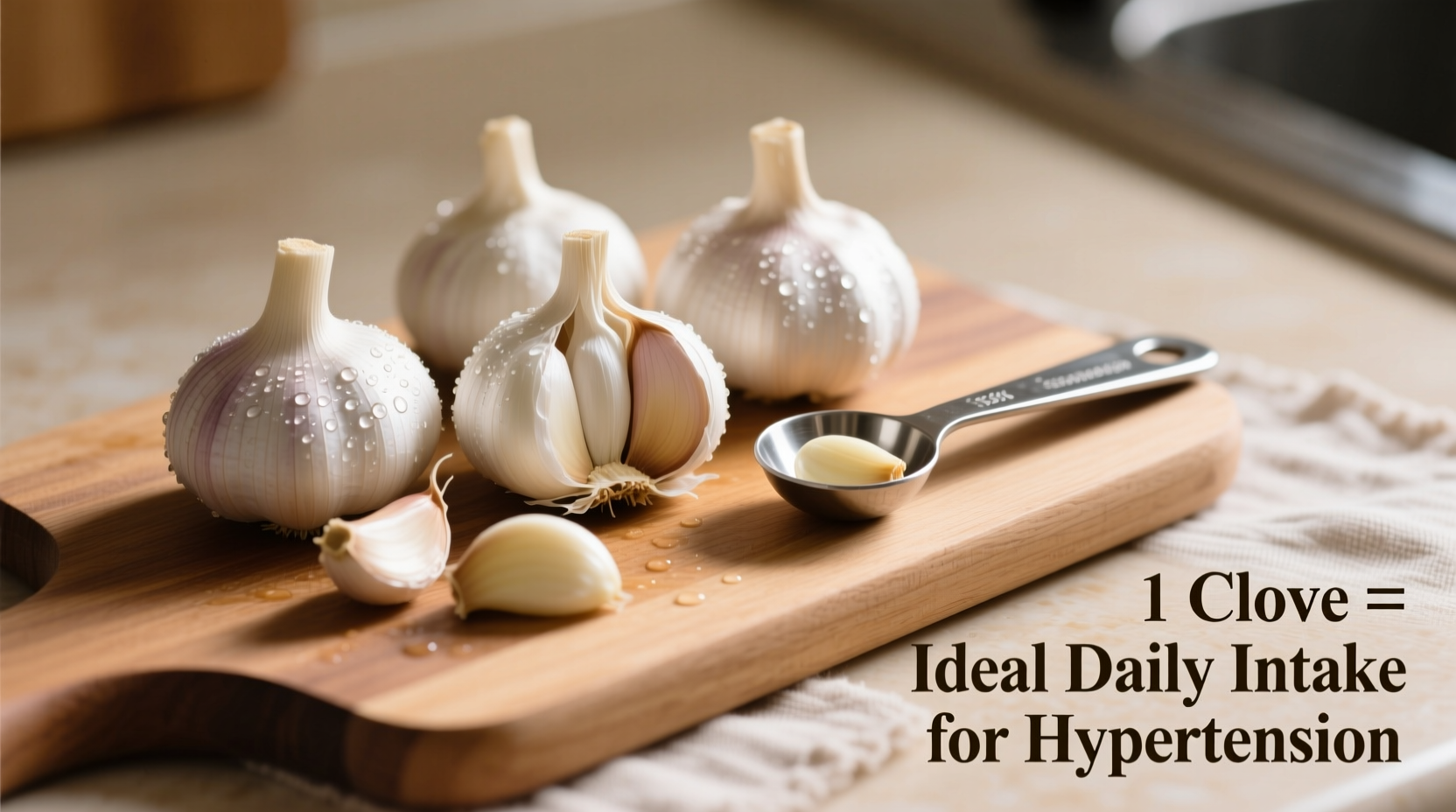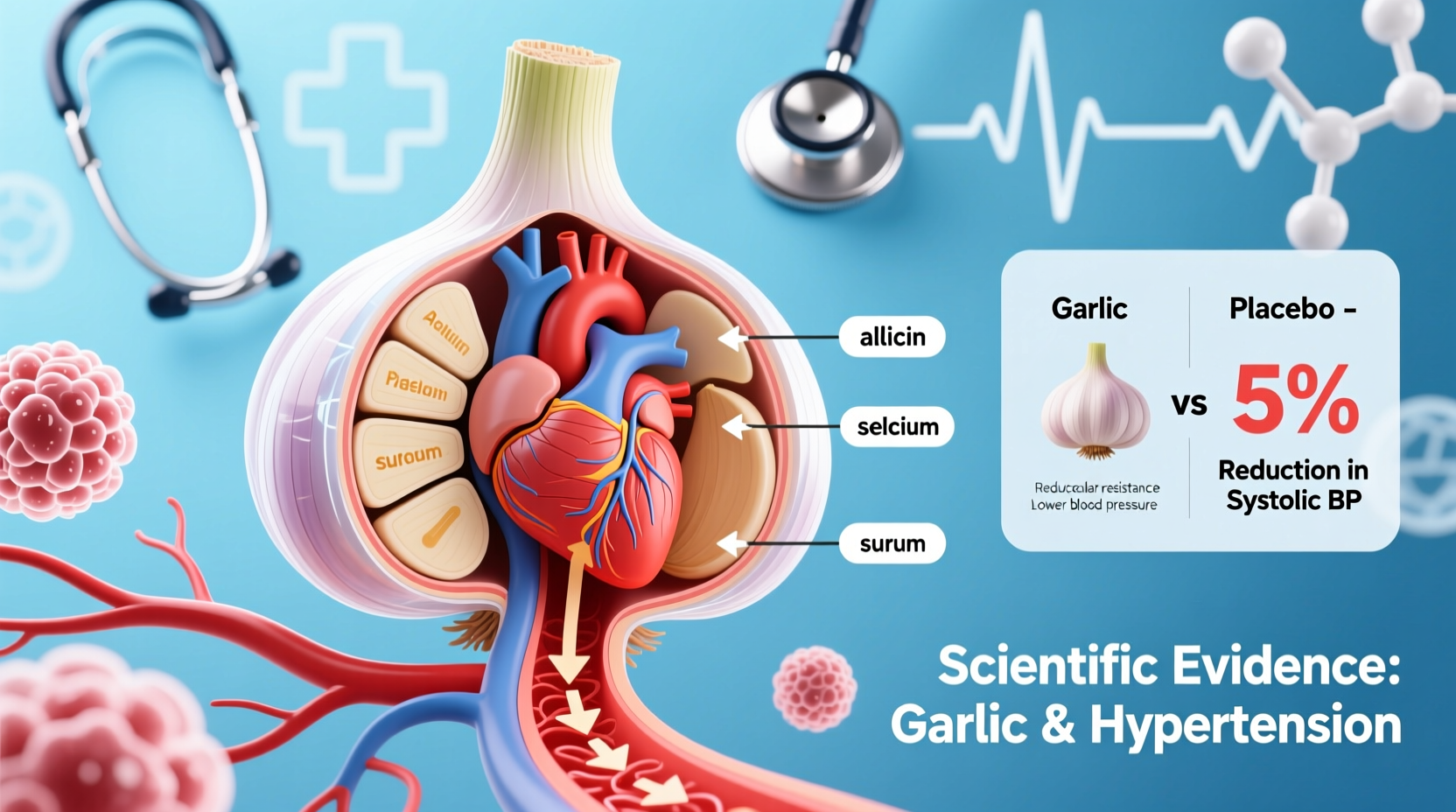For millions managing high blood pressure, the search for natural complementary approaches leads many to wonder: is garlic good for hypertension? As someone who's spent years studying the science behind culinary ingredients, I've examined the evidence to provide clear, actionable insights about garlic's role in blood pressure management.
How Garlic Works Against High Blood Pressure
Garlic's potential blood pressure benefits stem primarily from allicin, the compound formed when raw garlic is crushed or chopped. This bioactive component triggers several physiological responses:
- Promotes vasodilation by increasing nitric oxide production
- Reduces arterial stiffness through antioxidant effects
- May inhibit angiotensin-converting enzyme (ACE)
- Decreases oxidative stress in blood vessels
Unlike prescription medications that target single pathways, garlic works through multiple mechanisms simultaneously. This multi-target approach explains why many clinical studies show modest but consistent reductions in blood pressure readings, particularly in individuals with baseline hypertension.
What Scientific Research Reveals About Garlic and Hypertension
Multiple clinical trials and meta-analyses have examined garlic's effects on blood pressure. The evidence shows promising but moderate results:
| Study | Participants | Garlic Form & Dose | Duration | Blood Pressure Reduction |
|---|---|---|---|---|
| Reinhart et al. (2008) | 112 with hypertension | Aged garlic extract: 240-720 mg/day | 24 weeks | Systolic: 5-8 mmHg Diastolic: 3-5 mmHg |
| Ried et al. (2013) | Meta-analysis of 8 studies | Various garlic preparations | 1-24 weeks | Systolic: 5.1 mmHg Diastolic: 2.5 mmHg |
| Zhao et al. (2020) | Meta-analysis of 12 studies | Garlic powder/extract | 8-24 weeks | Systolic: 7.7 mmHg Diastolic: 5.0 mmHg |
According to the National Center for Complementary and Integrative Health, garlic supplements appear most effective for individuals with systolic blood pressure above 140 mmHg. The blood pressure-lowering effect typically becomes noticeable after 2-3 months of consistent use.

Practical Ways to Incorporate Garlic for Blood Pressure Support
Understanding is garlic good for hypertension requires knowing how to use it effectively. Not all garlic preparations deliver the same benefits:
Optimal Forms and Dosages
- Raw garlic: Most effective when crushed and allowed to sit for 10 minutes before consumption (2-4 grams daily)
- Aged garlic extract: Standardized supplements providing 1.2-2.4 mg of S-allylcysteine (600-1,200 mg daily)
- Cooked garlic: Retains some benefits but heat reduces allicin formation
For maximum benefit, consume raw garlic by crushing cloves and letting them sit for 10 minutes before adding to foods like salad dressings or yogurt dips. This activates the alliinase enzyme needed to form allicin.
Important Limitations and Considerations
While exploring whether garlic good for hypertension makes sense for your health regimen, consider these crucial factors:
When Garlic Isn't Enough
Garlic's blood pressure effects are modest compared to prescription medications. The American Heart Association emphasizes that garlic should complement—not replace—conventional hypertension treatment. If your systolic pressure exceeds 160 mmHg or diastolic exceeds 100 mmHg, medication remains essential.
Potential Medication Interactions
Garlic may interact with several common medications:
- Blood thinners: May increase bleeding risk when combined with warfarin
- HIV medications: May reduce effectiveness of saquinavir
- Some blood pressure medications: Could potentially cause excessive lowering
Always consult your physician before adding significant garlic consumption to your routine, especially if taking prescription medications.
Realistic Expectations Timeline
Unlike medication that works within hours, garlic's blood pressure benefits develop gradually. Most studies show measurable effects after 8-12 weeks of consistent use. Track your readings regularly to assess whether garlic supplementation provides meaningful benefits for your specific physiology.
Integrating Garlic Into Your Hypertension Management Plan
For those investigating is garlic good for hypertension as part of a comprehensive approach, consider these practical strategies:
- Combine garlic with other blood pressure-friendly foods like leafy greens, berries, and fatty fish
- Use raw garlic in salad dressings, hummus, or yogurt-based sauces
- Consider aged garlic extract supplements if you dislike raw garlic's strong flavor
- Monitor your blood pressure regularly to track any changes
- Continue prescribed medications unless your doctor advises otherwise
Remember that garlic works best as part of the DASH (Dietary Approaches to Stop Hypertension) eating pattern, which emphasizes fruits, vegetables, whole grains, and low-fat dairy products while reducing sodium intake.
Final Considerations on Garlic and Blood Pressure
The question is garlic good for hypertension has a nuanced answer: yes, but with important caveats. Research supports garlic as a modest complementary approach for blood pressure management, particularly for those with mild to moderate hypertension.
When incorporating garlic, prioritize consistency and proper preparation methods to maximize potential benefits. Most importantly, maintain open communication with your healthcare provider about all complementary approaches you're using alongside conventional treatment.











 浙公网安备
33010002000092号
浙公网安备
33010002000092号 浙B2-20120091-4
浙B2-20120091-4